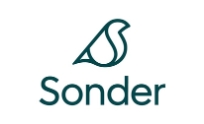
MGK Hospitality: Hotel occupancy improvements in MENA
|
 |
MGK Hospitality: Hotel occupancy improvements in MENA
|
Category: Worldwide - Industry economy
- Figures / Studies
This is a press release selected by our editorial committee and published online for free on 2010-02-09
Hotels throughout the Middle East & North African (MENA) region have shown modest signs of
recovery towards the end of 2009, with occupancy rates improving. Key points:
• Room rates in the United Arab Emirates (UAE) fall to 2007 levels
• Two consecutive years of RevPAR decrease in Kingdom of Saudi Arabia (KSA)
• Gulf Cooperation Council (GCC) countries show mix-reactions in 2009
• Rest of MENA shows good signs
Middle East and North Africa, February 8th 2010: Hotel demand is showing modest signs of recovery
throughout the Middle East & North African (MENA) region, with December increasing by 4.6%.
“This is a clear sign that hotels are entering the next stage of the cycle, and that slow recovery is
on the way. At the moment, rates are reflecting the state of the economy, and in particular a drop
in purchasing power. Once the economy picks-up, and hotel occupancy begins increasing,
hoteliers will be able to slowly balance and then raise average rates, in turn boosting overall
RevPAR results”, explains Director of Development, MKG Hospitality, Vanguelis Panayotis.
Indeed, the last three months of 2009 reveal a continuation in heavy price cuts throughout the region,
in an attempt to stimulate, or maintain demand.
According to MKG Hospitality’s online market intelligence tool, HotelCompSet, the UAE recorded a
20.8% Revenue Per Available Room (RevPAR) decrease for year-end 2009, mainly driven by an
Average Daily Rate (ADR) drop of 15.2% - a major turnaround since 2008, when average room rates
increased by 16.5% over 2007. Dubai recorded the largest RevPAR fall in 2009, with a decrease of
27.5%, while Abu Dhabi proved to be a lot more resilient, dropping by only 4.9%.
|
|





